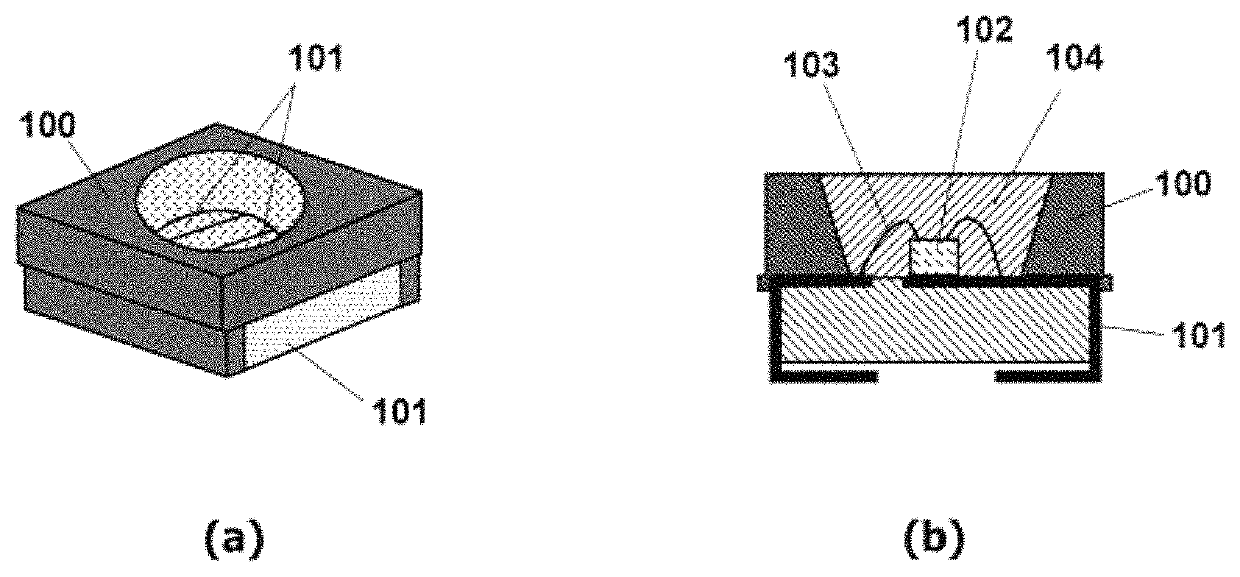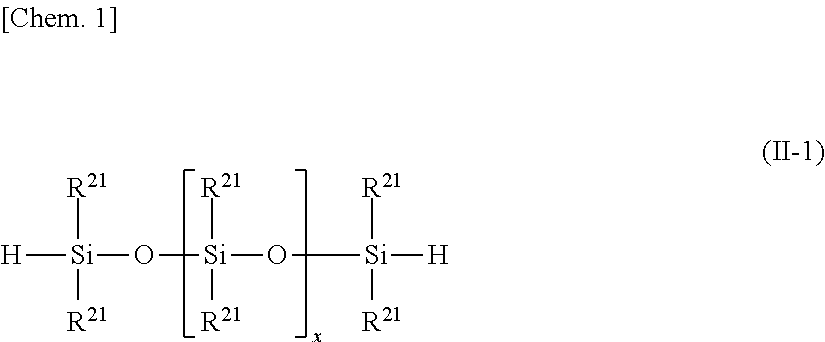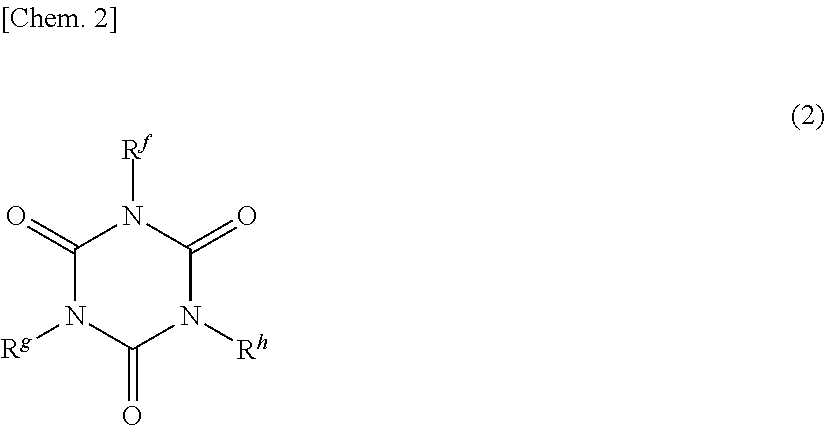Curable resin composition, cured product thereof, and semiconductor device
a technology of curing resin and curing product, which is applied in the direction of semiconductor/solid-state device details, instruments, optical elements, etc., can solve the problems of reducing luminous intensity, and achieve excellent heat resistance and light resistance, increased gas barrier properties, and high transparency
- Summary
- Abstract
- Description
- Claims
- Application Information
AI Technical Summary
Benefits of technology
Problems solved by technology
Method used
Image
Examples
production example 1
[0447]To a 500-mL four-neck flask were added 60.02 g (288.10 mmol) of tetraethoxysilane, 14.79 g (74.74 mmol) of trimethoxyphenylsilane, 11.96 g (73.65 mmol) of hexamethyldisiloxane, 2.87 g (15.40 mmol) of 1,1,3,3-tetramethyl-1,3-divinyldisiloxane, and 65.27 g of methyl isobutyl ketone. The mixture was cooled to 15° C., and 18.38 g of 5 N hydrochloric acid placed in a dropping funnel was then added dropwise. Further, 24.78 g of water was added dropwise. After that, the resulting mixture was heated to 80° C. and then stirred. Subsequently, 60.96 g (375.42 mmol) of hexamethyldisiloxane and 14.40 g (77.25 mmol) of 1,1,3,3-tetramethyl-1,3-divinyldisiloxane were further added and the mixture was then stirred.
[0448]Next, the resulting reaction solution was transferred to a separating funnel; only a lower layer containing a silicone resin was removed; and this liquid was transferred to the separating funnel again and was then washed with water.
[0449]After the water washing, a solvent porti...
production example 2
[0454]To a 500-mL four-neck flask were added 45.57 g (218.75 mmol) of tetraethoxysilane, 26.03 g (131.25 mmol) of trimethoxyphenylsilane, 8.32 g (51.27 mmol) of hexamethyldisiloxane, 5.73 g (30.76 mmol) of 1,1,3,3-tetramethyl-1,3-divinyldisiloxane, and 67.98 g of methyl isobutyl ketone. The mixture was cooled to 15° C., and 16.35 g of 5 N hydrochloric acid placed in a dropping funnel was then added dropwise. Further, 22.05 g of water was added dropwise. After that, the resulting mixture was heated to 80° C. and then stirred. Subsequently, 41.62 g (256.33 mmol) of hexamethyldisiloxane and 28.67 g (153.80 mmol) of 1,1,3,3-tetramethyl-1,3-divinyldisiloxane were further added and the mixture was then stirred.
[0455]Next, the reaction solution was transferred to a separating funnel; only a lower layer containing a silicone resin was removed; and this liquid was transferred to the separating funnel again and was then washed with water.
[0456]After the water washing, a solvent portion was re...
production example 3
[0461]To a 500-mL four-neck flask were added 36.46 g (175.00 mmol) of tetraethoxysilane, 34.70 g (175.00 mmol) of trimethoxyphenylsilane, 8.12 g (50.00 mmol) of hexamethyldisiloxane, 5.59 g (30.00 mmol) of 1,1,3,3-tetramethyl-1,3-divinyldisiloxane, and 67.98 g of methyl isobutyl ketone. The mixture was cooled to 15° C., and 16.35 g of 5 N hydrochloric acid placed in a dropping funnel was then added dropwise. Further, 22.05 g of water was added dropwise. After that, the resulting mixture was heated to 80° C. and then stirred. Subsequently, 40.60 g (250.00 mmol) of hexamethyldisiloxane and 27.96 g (150.00 mmol) of 1,1,3,3-tetramethyl-1,3-divinyldisiloxane were further added and the mixture was then stirred.
[0462]Next, the reaction solution was transferred to a separating funnel; only a lower layer containing a silicone resin was removed; and this liquid was transferred to the separating funnel again and was then washed with water.
[0463]After the water washing, a solvent portion was re...
PUM
| Property | Measurement | Unit |
|---|---|---|
| viscosity | aaaaa | aaaaa |
| viscosity | aaaaa | aaaaa |
| molecular weight distribution | aaaaa | aaaaa |
Abstract
Description
Claims
Application Information
 Login to View More
Login to View More - R&D
- Intellectual Property
- Life Sciences
- Materials
- Tech Scout
- Unparalleled Data Quality
- Higher Quality Content
- 60% Fewer Hallucinations
Browse by: Latest US Patents, China's latest patents, Technical Efficacy Thesaurus, Application Domain, Technology Topic, Popular Technical Reports.
© 2025 PatSnap. All rights reserved.Legal|Privacy policy|Modern Slavery Act Transparency Statement|Sitemap|About US| Contact US: help@patsnap.com



